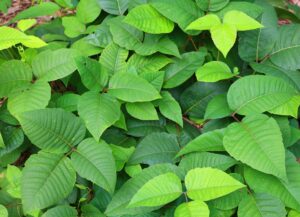
Poison ivy is a common plant that can cause a really itchy and uncomfortable allergic skin reaction. At HMGS Dermatology, we specialize in treating contact dermatitis such as poison ivy, and all of the skin conditions that can resemble it, to help you recover quickly and safely.
Fiction#1: The Fluid From the Blisters Cause Further Spreading.
Once you have the poison ivy rash you are not contagious to yourself or others. Your skin reaction is all due to the initial oil exposure, despite it popping out on different locations on your body at different times.
Fiction #2: Everyone Gets Poison Ivy.
Some people (approximately 15%) are naturally resistant and do not react to exposure.
Fiction #3: The Fluid is the Ivy Poison Coming out.
The fluid in the blister is your immune system’s response to the allergen.

What is Poison Ivy Rash?
Poison ivy skin rash occurs when your skin comes into contact with urushiol, an oily resin found in poison ivy, poison oak, and poison sumac plants. Symptoms typically develop within 12 to 48 hours of exposure and may include:
- Itching
- Redness
- Blisters
- Swelling
While mild cases often resolve on their own within 2-3 weeks, severe reactions may require medical intervention. There is variability in severity of poison ivy due to an individual’s immune status and extent of exposure. Learn more about poison ivy symptoms and treatment options on our dedicated page about poison ivy treatment.
Why Should You See a HMGS Dermatologist?
We’ve seen it all at HMGS. Our providers see “black spot” poison ivy, erythema multiforme associated with poison ivy, dog fur transferring the urushiol oil, and hospitalized patients with severe facial and eyelid swelling.
It’s important to know when your poison ivy rash requires professional care. You should schedule an appointment with a dermatologist if you experience any of the following:
Severe Blistering or Widespread Rash
If your rash covers a large portion of your body or includes numerous itchy or painful blisters, it’s time to seek medical attention.
Signs of Infection
A poison ivy rash can become infected if scratched excessively. Symptoms of infection include:
- Pus or discharge from the rash
- An unpleasant odor from the affected area
- Increased redness or swelling around the rash
- Fever or fatigue
Facial or Genital Involvement
A rash near sensitive areas like the face, eyes, or genitals may require more urgent medical attention due to the risk of extreme swelling and subsequent complications.
No Improvement After 7-10 Days
If your rash is just terribly itchy, keeps you up at night or does not improve with home remedies or appears to worsen over time, consult a dermatologist for a proper diagnosis and treatment plan.
How Can HMGS Dermatology Help?
At HMGS Dermatology, our experienced team provides effective treatments for poison ivy tailored to your specific needs. Our services include:
- Corticosteroids: Topical or oral medications to reduce inflammation.
- Antibiotics: For treating secondary bacterial infections.
- Antihistamines: To alleviate itching and discomfort.
Preventing Poison Ivy Rash
The best way to avoid a rash is by preventing contact with the plant. Here are some tips:
- “Leaves of three, let it be”. Learn to identify poison ivy by its distinctive three-leaf pattern.
- Wear long sleeves, pants, and gloves when in areas where poison plants may grow.
- Wash clothing and skin immediately after potential exposure.
- Avoid burning poison ivy plants, as inhaling the smoke can cause severe skin and systemic reactions.
Your Skin Deserves Expert Care
If you’re dealing with a persistent or severe poison ivy rash, don’t wait for it to worsen. Schedule an appointment with HMGS Dermatology today for expert diagnosis and treatment. Visit our website at HMGS Dermatology, or call us to book your consultation!
The post 3 Leaves and 3 Fictions: Poison Ivy Explained by a Dermatologist appeared first on Heymann, Manders, Green, & Sommer.